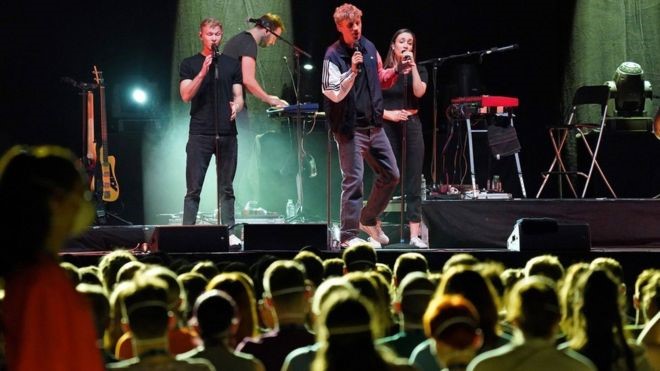By Natalie Taylor
Human beings have one feature that distinguishes them from and is vastly superior than in other species—imagination. It’s what accounts for our acquisition of knowledge and its passage to the next generation, and it’s what makes us the ultimate tool-makers—we create not only physical devices, we devise behavior to adapt to circumstances.
One of the post-pandemic effects is the bans of large gatherings indoors. This is of course, understandable, as we have seen infections increase following any major concentration of people—from large rallies to crowded bars. The idea of holding a social event indoors, with hundreds or thousands cheering and spewing out air-born particles seems ludicrous. The events industry has suffered tremendously because of this. But are we truly doomed to never going to a musical concert, watching a play, seeing a sporting event, or hearing a public speaker? Can we not enjoy an art gallery opening where we can speak with the artist or mingle at a fair?
As mentioned previously, human beings tackle new challenges with the use of imagination. That means constructing a mental model of alternatives. An interesting current study is underway in Leipzig, Germany to see how we might be able to come together to enjoy a large indoor event.
The study, titled Restart-19, put 1,500 healthy volunteers between the ages of 18 and 50 to a test. Three indoor concerts were held in a single day, each with a different level of health measures.
All participants were tested for Covid-19 before taking part, and their temperatures were taken. Participants were fitted with electronic contact tracers to record their movements around the arena and to monitor the aerosols (air-born particles) they emitted. Fluorescent disinfectants tracked the surfaces they touched most frequently. The first event involved no safety measures whatsoever; as if the pandemic had never existed. The second instituted more hygiene and some social distancing. The third cut down on the number of attendees, all wearing FFP2 masks (equivalent to N95), and keeping a distance of 1.5 meters from each other.
The lead performer on stage was German pop-singer Tim Bedzko, who later said: “At first I thought it would be very sterile because of the masks, but it felt surprisingly good.”
The data collected will be studied, and results are expected to become public in September; all with the hope of showing a way of safely resuming indoor events. Universities in Australia, Denmark, and Belgium are also planning similar studies. The projects have their critics, both because of the risks to those involved and the potential inaccuracies. It’s important to understand that these studies are just that—studies—they simulate but don’t duplicate the real world. But the options are having no data or partial data, and, as one of the researchers said: “Halfway is better than nothing at all.” I will be monitoring the results and will report back when they become available.

